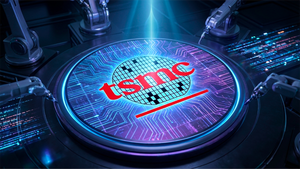Financial News
Taysha Gene Therapies Announces Positive Initial Biomarker Data For TSHA-101, the First Bicistronic Gene Therapy in Clinical Development, Demonstrating Normalization of β-Hexosaminidase A Enzyme Activity in Patients With GM2 Gangliosidosis
Patient 1 with Sandhoff disease realized normalization of Hex A enzyme activity by Month 1, achieving 58-fold above the presumed asymptomatic level of 5% of normal identified by natural history at Month 3
Patient 2 with Tay-Sachs disease achieved Hex A enzyme activity 5-fold above the presumed asymptomatic level of 5% of normal identified by natural history at Month 1
First-ever data supporting bicistronic vector approach in humans, TSHA-101 is designed to deliver both HEXA and HEXB genes in the endogenous ratio
Conference call and live webcast today at 8:00 AM Eastern Time
Taysha Gene Therapies, Inc. (Nasdaq: TSHA), a patient-centric, pivotal-stage gene therapy company focused on developing and commercializing AAV-based gene therapies for the treatment of monogenic diseases of the central nervous system (CNS) in both rare and large patient populations, today reported positive initial serum β-hexosaminidase A (Hex A) enzyme activity data for TSHA-101 in patients with Sandhoff and Tay-Sachs diseases, which represent two forms of GM2 gangliosidosis. Today’s data are the first ever to support the bicistronic vector approach in humans delivering both HEXA and HEXB genes in the endogenous ratio.
“TSHA-101 is the first bicistronic vector in clinical development, representing an important first for the field of gene therapy,” noted RA Session II, President, Founder and CEO of Taysha. “TSHA-101 demonstrated expression of both HEXA and HEXB genes in the endogenous ratio, providing the ability to restore and normalize enzyme activity in GM2 gangliosidosis. We expect to provide continued updates on the program, with additional clinical data anticipated by the end of 2022.”
Based on natural history data, patients with asymptomatic GM2 gangliosidosis have Hex A enzyme levels that are at least 5% of normal activity. Key patient findings for Hex A enzyme activity following treatment with TSHA-101 include:
Patient 1 (Sandhoff disease)
- Achieved Hex A enzyme activity of 190% and 288% of normal at Month 1 and Month 3 respectively
- Representing 38-fold and 58-fold above the presumed asymptomatic level of 5% of normal identified by natural history at Month 1 and Month 3 respectively
Patient 2 (Tay-Sachs disease)
- Achieved Hex A enzyme activity of 25% of normal at Month 1
- Representing 5-fold above the presumed asymptomatic level of 5% of normal identified by natural history
- Only eligible for the Month 1 analysis
Suyash Prasad, MBBS, M.Sc., MRCP, MRCPCH, FFPM, Chief Medical Officer and Head of Research and Development at Taysha added, “GM2 gangliosidosis is a progressive and life-limiting disease with no treatment options. Normalization of patient Hex A enzyme activity levels 58-fold above the presumed asymptomatic level of 5% of normal identified by natural history supports TSHA-101’s ability to potentially make a meaningful difference in the lives of patients with Sandhoff and Tay-Sachs diseases after a single intrathecal administration. We look forward to submitting a protocol amendment to expand patient enrollment in the ongoing Phase 1/2 trial and providing additional updates later this year.”
Preliminary data suggest that TSHA-101 was well-tolerated with no significant drug-related events.
Patient 1 (Sandhoff) demonstrated signs of clinical improvement at Month 3 and was deemed stable to travel home. Upon returning home, Patient 1 (Sandhoff), who was unvaccinated, was exposed to a family member symptomatic for an upper respiratory infection, possibly Covid-19, and was hospitalized with pneumonia before contracting a secondary hospital-acquired methicillin-resistant staphylococcus aureus (MRSA) infection. On January 14, 2022, the patient succumbed to pneumonia and pleural effusion with a concomitant hospital-acquired MRSA infection. The principal investigator has made the initial assessment that the death was unrelated to study drug. Final determination from the independent data safety monitoring board (DSMB) is anticipated in the near term.
TSHA-101 is an investigational gene therapy that delivers both the HEXA and HEXB genes that comprise the β-hexosaminidase A enzyme. The two genes are driven by a single promoter within an AAV9 capsid ensuring that the two sub-units of Hex A are produced in the endogenous ratio within each cell, which is important to ensure efficient production of the enzyme. TSHA-101 is the first and only bicistronic vector currently in clinical development for GM2 gangliosidosis and has been granted Orphan Drug and Rare Pediatric Disease designations by the FDA and Orphan Drug Designation from the European Commission. TSHA-101 is administered intrathecally and is currently being evaluated in a single arm, open-label Phase 1/2 clinical trial for the treatment of infants with GM2 gangliosidosis sponsored by Queen’s University. Additional clinical safety and efficacy data are expected by the end of 2022.
GM2 gangliosidosis is a rare and devastating monogenic lysosomal storage disorder that is part of a family of neurodegenerative genetic diseases that includes Tay-Sachs and Sandhoff diseases. The disease is caused by defects in the HEXA or HEXB genes that encode the two subunits of the β-hexosaminidase A (Hex A) enzyme. These genetic defects result in progressive dysfunction of the central nervous system. Residual Hex A enzyme activity determines the severity of the disease. The infantile form of the disease has an onset of symptoms usually before six months of age with residual Hex A enzyme activity of less than 0.1%. Juvenile onset occurs between 1.5 and five years of age with residual Hex A enzyme activity of approximately 0.5%. Early adult onset of the disease has residual Hex A enzyme activity of between 2% to 4%. There are no approved therapies for this disease, and current treatment is limited to supportive care.
Conference Call and Webcast Information
Taysha management will hold a conference call and webcast today at 8:00 am ET / 7:00 am CT to provide an update on the GM2 gangliosidosis program. The dial-in number for the conference call is 877-407-0792 (U.S./Canada) or 201-689-8263 (international). The conference ID for all callers is 13726741. The live webcast and replay may be accessed by visiting Taysha’s website at https://ir.tayshagtx.com/news-events/events-presentations. An archived version of the webcast will be available on the website for 30 days.
About Taysha Gene Therapies
Taysha Gene Therapies (Nasdaq: TSHA) is on a mission to eradicate monogenic CNS disease. With a singular focus on developing curative medicines, we aim to rapidly translate our treatments from bench to bedside. We have combined our team’s proven experience in gene therapy drug development and commercialization with the world-class UT Southwestern Gene Therapy Program to build an extensive, AAV gene therapy pipeline focused on both rare and large-market indications. Together, we leverage our fully integrated platform—an engine for potential new cures—with a goal of dramatically improving patients’ lives. More information is available at www.tayshagtx.com.
Forward-Looking Statements
This press release contains forward-looking statements within the meaning of the Private Securities Litigation Reform Act of 1995. Words such as “anticipates,” “believes,” “expects,” “intends,” “projects,” “plans,” and “future” or similar expressions are intended to identify forward-looking statements. Forward-looking statements include statements concerning the potential of our product candidates, such as TSHA-101 and including our preclinical product candidates, to positively impact quality of life and alter the course of disease in the patients we seek to treat, our research, development and regulatory plans for our product candidates, the potential for these product candidates to receive regulatory approval from the FDA or equivalent foreign regulatory agencies, and whether, if approved, these product candidates will be successfully distributed and marketed, the potential market opportunity for these product candidates, and our corporate growth plans. Forward-looking statements are based on management’s current expectations and are subject to various risks and uncertainties that could cause actual results to differ materially and adversely from those expressed or implied by such forward-looking statements. Accordingly, these forward-looking statements do not constitute guarantees of future performance, and you are cautioned not to place undue reliance on these forward-looking statements. Risks regarding our business are described in detail in our Securities and Exchange Commission (“SEC”) filings, including in our Annual Report on Form 10-K for the full-year ended December 31, 2020 and our Quarterly Report on Form 10-Q for the quarter ended September 30, 2021, both of which are available on the SEC’s website at www.sec.gov. Additional information will be made available in other filings that we make from time to time with the SEC. Such risks may be amplified by the impacts of the COVID-19 pandemic. These forward-looking statements speak only as of the date hereof, and we disclaim any obligation to update these statements except as may be required by law.
View source version on businesswire.com: https://www.businesswire.com/news/home/20220127005353/en/
Contacts
Company Contact:
Kimberly Lee, D.O.
SVP, Corporate Communications and Investor Relations
Taysha Gene Therapies
klee@tayshagtx.com
Media Contact:
Carolyn Hawley
Canale Communications
carolyn.hawley@canalecomm.com
More News
View More




Recent Quotes
View MoreQuotes delayed at least 20 minutes.
By accessing this page, you agree to the Privacy Policy and Terms Of Service.



